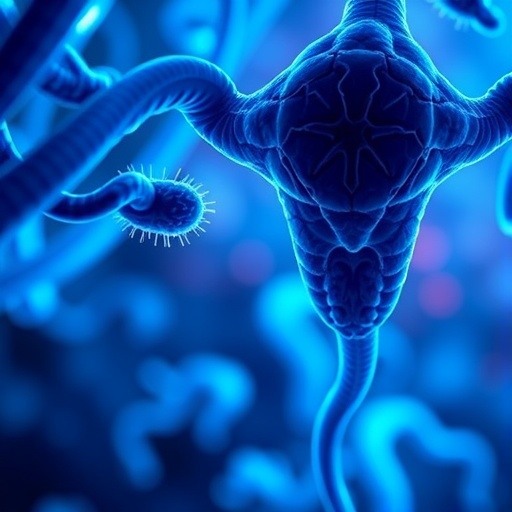In a groundbreaking study poised to reshape the field of reproductive medicine, researchers have unveiled significant findings regarding the effect of tubal occlusion in women diagnosed with hydrosalpinx. Hydrosalpinx, a condition characterized by the accumulation of fluid in the fallopian tubes, often presents a major barrier to successful in vitro fertilization (IVF). The recent research led by esteemed scientists Li, J., Li, H., and Liao, J. provides exciting insights into how managing this condition could lead to improved pregnancy outcomes within a notably short timeframe of seven months.
The study meticulously examines the intricate relationship between tubal occlusion and IVF success rates. The researchers initially set out to determine if obstructing fluid passage through the fallopian tubes could potentially enhance the uterine environment for embryo implantation. Their investigation took place in a clinical setting, where the interplay of various factors was systematically analyzed to draw concrete conclusions about the outcomes of IVF procedures performed on affected patients.
As the research progressed, it became increasingly evident that the fluid accumulation associated with hydrosalpinx not only disrupts anatomical structures but also alters the biochemical milieu critical for embryo survival and implantation. The findings suggest that by occluding the fallopian tubes, the adverse effects of accumulated fluid are mitigated, thereby creating a more favorable uterine environment. Such modifications are essential for optimizing IVF protocols and improving overall treatment efficacy.
The implications of these findings extend beyond mere statistical improvements in pregnancy rates. They challenge existing protocols that often overlook hydrosalpinx as a relevant factor in fertility treatments. By adopting a more proactive approach towards tubal occlusion, fertility specialists could redefine treatment modalities for patients grappling with this condition. The revelation that modifying the uterine environment can lead to tangible improvements in IVF outcomes is both promising and thought-provoking.
A set of clinical trials formed the backbone of this research, involving a diverse group of women diagnosed with hydrosalpinx. This eclectic cohort provided the researchers with a broad spectrum of data, enhancing the validity of their conclusions. As the study progressed, real-world applications of the findings began to unfold, drawing attention from both clinicians and patients alike. The prospect of tailored fertility treatments that acknowledge the unique challenges posed by hydrosalpinx is incredibly appealing.
Within the span of seven months following the tubal occlusion procedure, the improvement in IVF outcomes was not just statistically significant; it underscored a palpable transformation in how patients could perceive their fertility journey. For many women, the burden of repeated unsuccessful IVF attempts can be overwhelming, both emotionally and financially. This research illuminates a path forward, allowing practitioners to make informed decisions that may lead to increased success rates, ultimately changing lives.
In addition to the practical considerations of tubal occlusion, the researchers provided a robust framework for understanding the underlying biological mechanisms at play. By dissecting the factors that govern the uterine environment, they highlighted the importance of a well-balanced biochemical setting conducive to implanting embryos. This insight into the bioactive substances present—and their roles—offers a valuable perspective for future studies aimed at enhancing fertility.
Furthermore, the findings prompt an essential conversation around the interdisciplinary nature of reproductive health. Physicians from various specialties, including gynecology, reproductive endocrinology, and even pharmacology, can glean insights from this study that might influence their own practices. This research serves as a catalyst for collaboration across disciplines, ultimately fostering a more integrative approach to addressing complex fertility issues.
As the landscape of assisted reproductive technology continues to evolve, studies like this one become crucial in adapting practices to better meet clinical needs. The advent of personalized medicine is on the horizon, with this investigation providing empirical support for more individualized treatment avenues tailored to distinct patient circumstances. The possibility of introducing innovative hormonal treatments or adjunct therapies alongside tubal occlusion opens doors to a myriad of future research endeavors.
In conclusion, the innovative research conducted by Li et al. presents a compelling narrative about the intersection of tubal health and reproductive success. It champions a critical re-evaluation of current practices, advocating for a shift in perspective that prioritizes the optimization of the uterine environment. As this research inspires further inquiry, it concurrently highlights the urgent need for ongoing advancements in reproductive technologies that can transform hope into reality for many aspiring parents.
Through rigorous analysis and thoughtful examination, this study not only broadens the understanding of how reproductive factors influence fertility but also reinforces the necessity for continued exploration in this complex field. As we anticipate the publication of these findings in the Journal of Ovarian Research, the world of reproductive medicine stands at the brink of what could be a significant paradigm shift in how fertility challenges, particularly those associated with hydrosalpinx, are addressed.
Subject of Research: The effect of tubal occlusion on IVF outcomes in women with hydrosalpinx.
Article Title: Tubal occlusion in patients with hydrosalpinx modifies the uterine environment and improves in vitro fertilization outcomes within 7 months.
Article References:
Li, J., Li, H., Liao, J. et al. Tubal occlusion in patients with hydrosalpinx modifies the uterine environment and improves in vitro fertilization outcomes within 7 months.
J Ovarian Res 18, 223 (2025). https://doi.org/10.1186/s13048-025-01803-2
Image Credits: AI Generated
DOI: 10.1186/s13048-025-01803-2
Keywords: Tubal occlusion, hydrosalpinx, IVF outcomes, uterine environment, reproductive health.
Tags: clinical study on fertility treatmentsenhancing embryo implantation successfallopian tube fluid accumulation effectshydrosalpinx and IVF outcomeshydrosalpinx surgery benefitsimproving pregnancy rates with hydrosalpinxinfertility treatments and outcomesIVF success with hydrosalpinx managementoptimizing uterine environment for IVFreproductive medicine advancementsresearch on hydrosalpinx and IVFtubal occlusion impact on fertility





